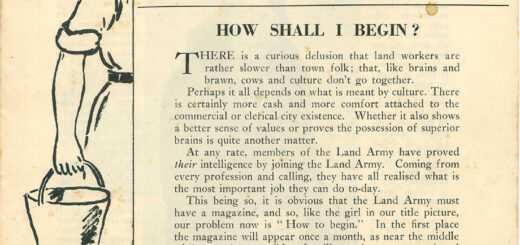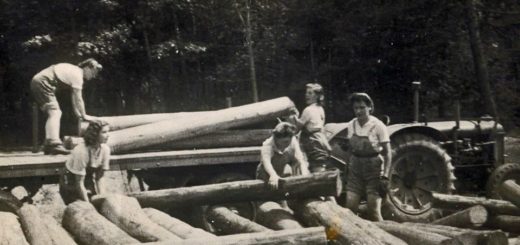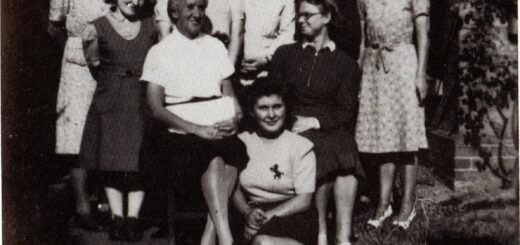Running the WLA: and the WTC too
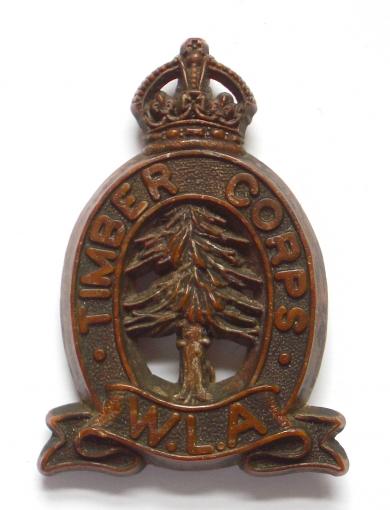
So far, this monthly series of posts has focused on how the Women’s Land Army (WLA) was run at both national and local levels. As we move towards the end of the series, it seems fitting to dedicate a post to the Women’s Timber Corps (WTC), which employed over 6,000 women in England, Wales and Scotland during the Second World War. This post outlines some of the differences between how the two wartime organisations were run.
Why was the WTC needed?
Wood was a cheap material and could be used for a range of purposes: telegraph poles, pit props in mines, on aircraft and ships, and in the production of charcoal in explosives. Realising its potential for the war effort, the government, specifically the Ministry of Supply, set up the Home Grown Timber Production Department in October 1940. In the early years of the war, women were recruited into forestry work via the WLA. These female forestry workers were later transferred into employment by the Home Grown Timber Production Department, or local timber merchants. [1] In April 1942, the department set up the WTC for England and Wales, with the establishment of Scottish Women’s Timber Corps just 2 months later. The WTC in England was split into 9 geographic areas, with each region having its own Production and Welfare Officers. [2]
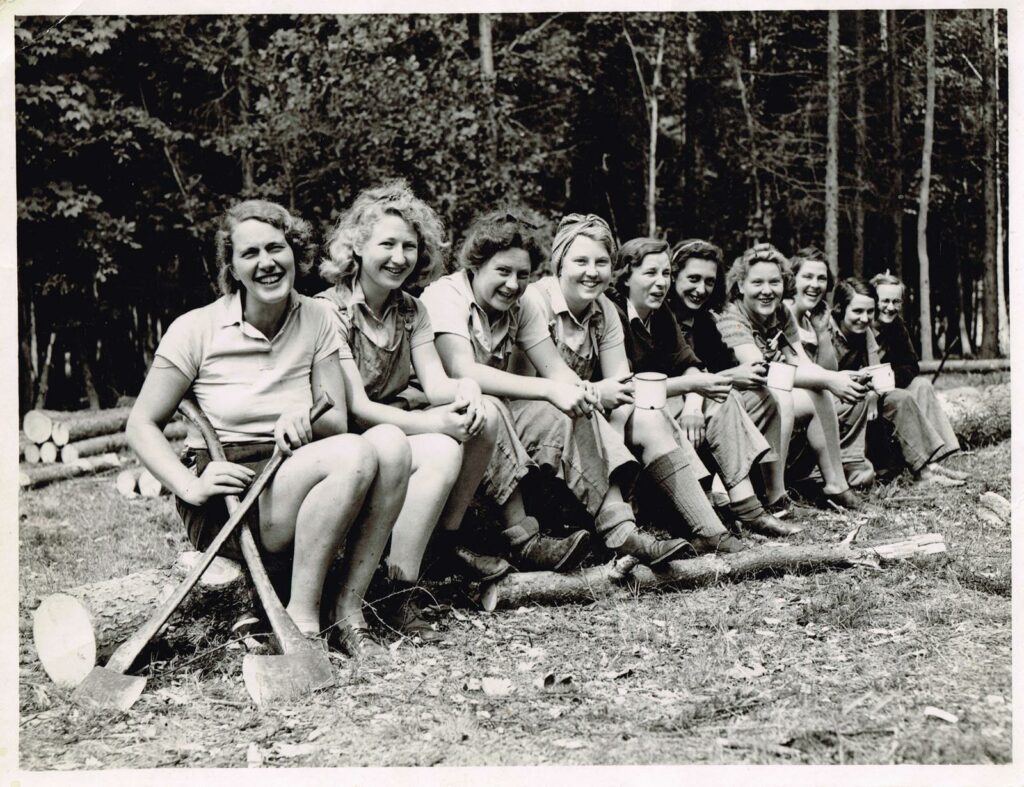
Comparing the WLA with the WTC
Women employed by the Home Grown Timber Production Department (whether in the days of the WLA or WTC) were subject to an Essential Works Order. This order meant that any woman who signed up to work in forestry would be unable to leave without the permission from both the Ministry of Supply and the Ministry of Labour. [3] Lumber Jills were locked into their employment on a more permanent basis than their Land Girl counterparts. The German invasion of Scandinavian countries such as Norway, meant that Britain’s previous supplies of timber had been cut off. Furthermore, Canadian ships which had previously transported timber no longer had room; food and armaments were the priority. As a result, women were urgently required to work for long periods of time in the forests. The heavy nature of their work meant that recruits underwent stricter medical examinations than was the case for Land Girls.
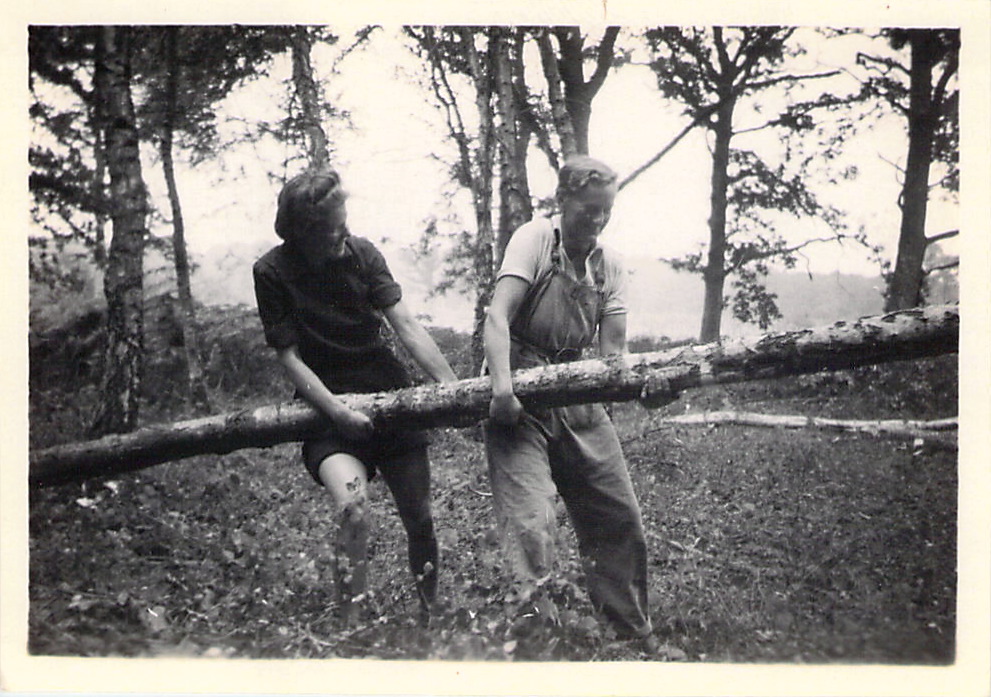
To give some context to these developments, the WLA was set up by the British government under the auspices of the Department of Agriculture and Fisheries in June 1939. It recruited young women, but these Land Girls were then paid directly either by farmers or County War Executive Committees once the WLA had placed them with these employers.
Members of the WTC, known as colloquially as ‘Lumber Jills’, were, however, employed directly by the Home Timber Production Department, which paid their wages. This was a vital difference: Lumber Jills were employed directly by the British state, unlike Land Girls who were employed by independent farmers or County ‘War Ags’ to pay their wages. Lumber Jills were paid on a piece-work basis, as opposed to Land Girls who received fixed wages, agreed at a national level.[4]
The skills required to wield axes, strip timber, and move large amounts of wood meant that training was a necessity. As increasing numbers joined the WTC, training centres became a high priority. In England and Wales, women were sent to Culford in Suffolk, Hereford in Herefordshire, Wetherby in Yorkshire, and Lydney in the Forest of Dean.[5] In Scotland, the majority of women undertook their training at Shanford Lodge, near Brechin. In the space of 4 weeks, women were introduced to a range of tasks – and tested as to whether they could carry out their work.
While the work of the WTC had its roots in the WLA, there were several distinct differences between the administration of the WLA and the WTC as civilian wartime organisations. It’s important that we recognise these differences when reflecting on how the British state mobilised over 6,000 women into the forests of Britain during the course of the Second World War.
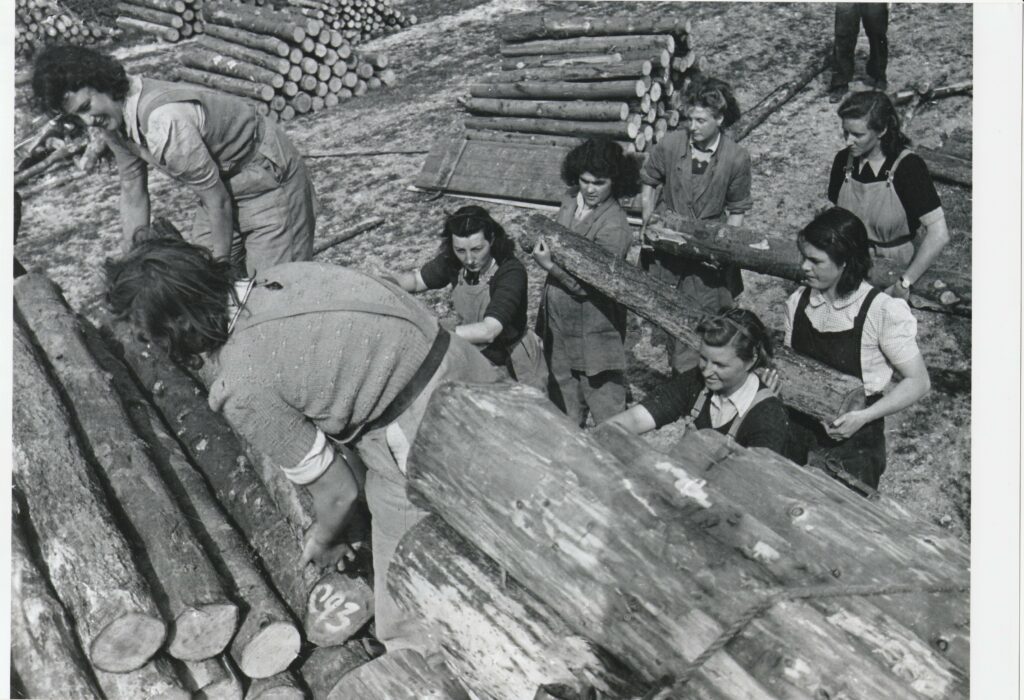
Find out more
[1] Joanna Foat, Lumberjills (The History Press, 2019), 34.
[2] Catherine N. Swanston, ‘The Health of Forestry Workers: A Survey of the Women’s Timber Corps of Great Britain’, British Journal of Industrial Medicine 3, no. 1 (1946): 3
[3] Foat, Lumberjills, 47.
[4] Emma Vickers, ‘“The Forgotten Army of the Woods”: The Women’s Timber Corps during the Second World War’, The Agricultural History Review 59, no. 1 (1 January 2011): 109.
[5] Foat, Lumberjills, 50.
